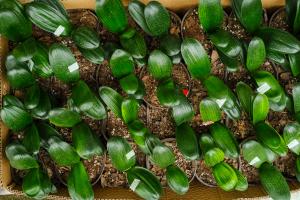How to Plant Water Hyacinths
Water hyacinths are beautiful aquatic plants that can add a stunning touch to your garden pond or water feature. Not only do they look aesthetically pleasing, but they are also great for purifying the water by absorbing excess nutrients that can cause algae growth. If you’re planning on planting water hyacinths, here’s how to do it:
Step 1: Choose a Suitable Location
Water hyacinths require full sun to grow and thrive. As such, it’s essential to place them in a position where they’ll receive at least 6 hours of direct sunlight each day. A location that’s sheltered from strong winds is also preferable, as the plants could easily be blown off the water surface when exposed to strong gusts. Additionally, ensure that the water in your pond or water feature is deep enough to accommodate the plants’ roots, which can grow up to 12 inches deep.
Step 2: Prepare the Soil
Water hyacinths don’t need soil to grow, but they require a substrate to anchor their roots. A suitable substrate for water hyacinths is a mixture of clay and sand. Before planting, mix some clay and sand to create a muddy consistency and spread it over the bottom of your pond or water feature. Ensure that the substrate is at least 6 inches deep, as this will enable the water hyacinths’ roots to anchor more securely.
Step 3: Plant the Water Hyacinths
Now that you’ve prepared the substrate, it’s time to plant your water hyacinths. Begin by gently placing the plants on the surface of the water. Ensure that the roots are placed in the substrate, and the leaves float on the surface of the water. Don’t push the plants too deep into the substrate, as this may damage their roots. Instead, allow the roots to slowly sink into the substrate and anchor themselves, which usually takes a couple of days.
Step 4: Care for Your Water Hyacinths
Water hyacinths are relatively easy to care for, but they still require some maintenance to keep them healthy and thriving. Firstly, ensure that the water is always clean and well-circulated. If the water becomes stagnant or polluted, the plants could quickly die. Secondly, water hyacinths require regular fertilization to promote healthy growth. A water-soluble fertilizer that’s high in nitrogen and phosphorus is ideal. Follow the manufacturer’s instructions when fertilizing to avoid over-fertilization, which could potentially harm the plants.
As an added caution, be sure to check with your local authorities before planting water hyacinths, as they are considered an invasive species in some areas, and their growth and spread may be restricted. With proper care, water hyacinths can add a touch of elegance to your garden pond or water feature, while also contributing to the ecosystem’s balance by purifying the water.

 how many times do yo...
how many times do yo... how many planted tre...
how many planted tre... how many pine trees ...
how many pine trees ... how many pecan trees...
how many pecan trees... how many plants comp...
how many plants comp... how many plants can ...
how many plants can ... how many plants and ...
how many plants and ... how many pepper plan...
how many pepper plan...






























